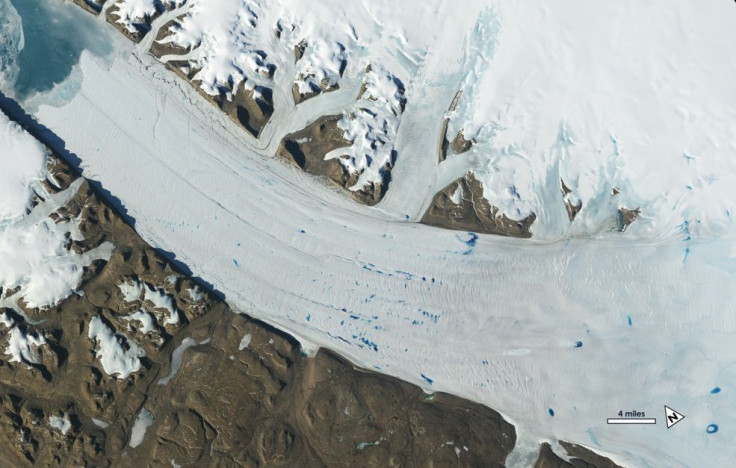NASA Video Shows 50-Year Effect Of Global Warming On Glaciers

KEY POINTS
- New NASA video shows long-term effect of climate change on glaciers and ice sheets
- The video features 50-years of data collected by satellites in space
- Large chunks of glaciers and ice sheets are melting because of global warming
NASA recently released a video that clearly shows the dramatic changes in Earth’s glaciers and ice sheets due to global warming. The video, which features images taken from space, shows how the frozen regions changed within a span of almost five decades.
The video was released by NASA during the recent annual meeting of the American Geophysical Union in San Francisco. It features data collected by satellites including the one from NASA and the U.S. Geological Survey’s Landsat missions.
The video shows time-lapse footage of various regions including Alaska, Greenland and Antarctica. Through the data collected by satellites from 1972 to 2019, NASA was able to highlight the dramatic changes that the massive glaciers and ice sheets went through during the past decades due to the warming climate.
One particular set of lime-lapse images shows how a glacier in Alaska constantly changed throughout the years because of the varying weather conditions.
“We now have this long, detailed record that allows us to look at what’s happened in Alaska,” Mark Fahnestock, a glaciologist from the University of Alaska Fairbanks, said in a statement. “When you play these movies, you get a sense of how dynamic these systems are and how unsteady the ice flow is.”
One of the most prominent regions featured in the video is the Hubbard Glacier in Alaska. Spanning about 76 miles long, this region is regarded as the largest tidewater glacier in North America.
However, in the video, the effect of 50 years of climate change can be seen on the Hubbard Glacier. A large indentation where ice used to be can be seen on the glacier. According to Fahnestock, the drastic change in the glacier’s appearance is very alarming.
“That calving embayment is the first sign of weakness from Hubbard Glacier in almost 50 years – it’s been advancing through the historical record,” he explained. “The satellite images also show that these types of calving embayments were present in the decade before Columbia retreated.”
Fahnestock warned that the changes within some of the world’s largest glaciers could worsen within the next couple of decades. If the effects of global warming on these ice regions continue, the world could expect to experience drastic increases in ocean levels within the coming years.
© Copyright IBTimes 2024. All rights reserved.





















